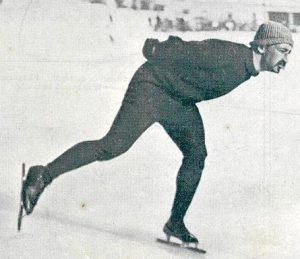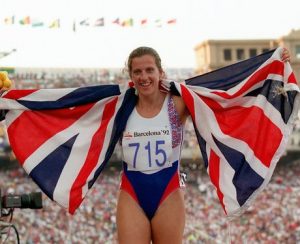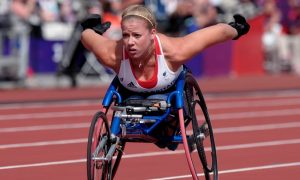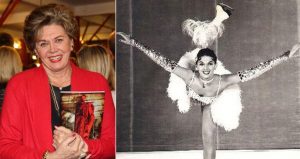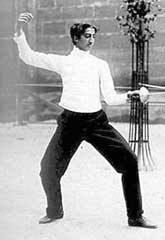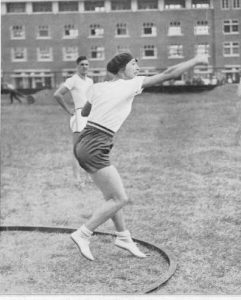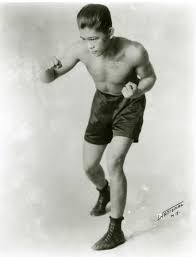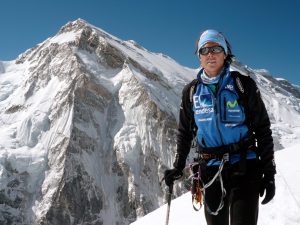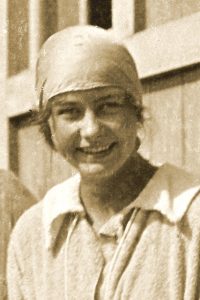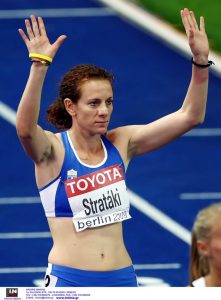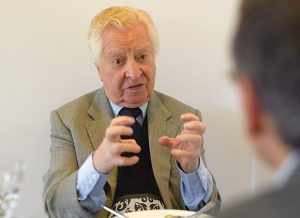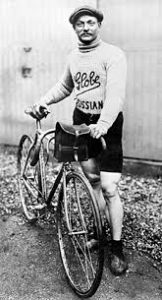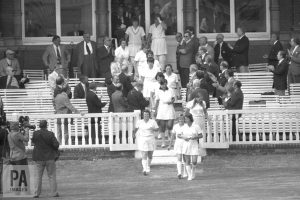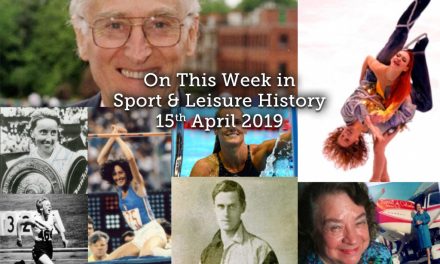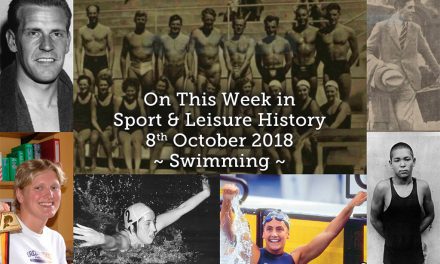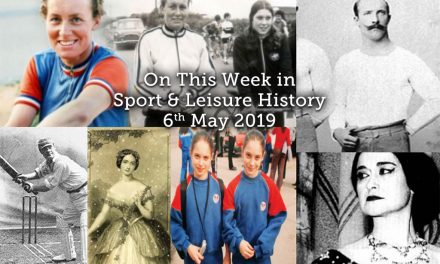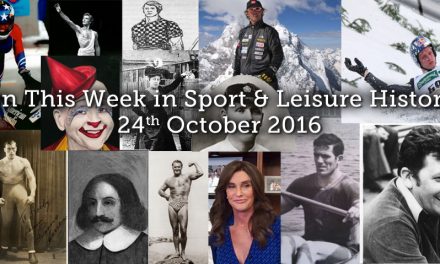29th
- The most famous bowls match in history took place on this day in 1588, or so legend has it. Sir Francis Drake was playing bowls on Plymouth Hoe when he received news that the Spanish Armada was off the coast of Cornwall.
- Stig Blomqvist, Swedish rally driver was born in 1946, who made his international breakthrough in 1971. Driving an Audi Quattro for the Audi factory team, Blomqvist won the World Rally Championship drivers’ title in 1984 and finished runner-up in 1985. He won his home event, the Swedish Rally, seven times. Outside the WRC, he won the British Rally Championship in 1983 and the Swedish Rally Championship several times. At the Race of Champions, Blomqvist took the title “Champion of Champions” in 1989 and 1990.
- On this day in 1948, after a hiatus of 12 years caused by World War II, the first Summer Olympics to be held since the 1936 Olympics in Berlin, open in London.
- A distant member of the Fry’s chocolate family and racing driver Joe Fry died on this day in 1950. He became the primary driver for the highly successful Shelsley Special “Freikaiserwagen”, created by his cousin David Fry and Hugh Dunsterville, with help from Dick Caesar. The original car was built in Bristol in 1936 and featured an Anzani engine which was replaced in 1937 by a Blackburne engine. Joe set a number of hill records during the late 1930s including an unofficial outright record at Prescott when he climbed in 47.62 seconds in the 1,100 c.c. Freikaiserwagen, on 27 August 1938. At the outbreak of World War Two he held both the blown and unblown 1100 cc records at Shelsley Walsh Hill Climb in 41.52 and 42.58 seconds respectively. Fry finished second in class, for racing cars up to 1100 cc, in the Freikaiserwagen at the Brighton Speed Trials in 1947. He drove the car to a class victory at Brighton the following year recording a faster time. He won the class again at Brighton in 1949 reducing his time yet again. time was 31.13 seconds. At Bouley Bay Hill Climb, Jersey, on 21 July 1949, Fry finished first in class but overall a runner-up to Sydney Allard, at which point Fry led the British Hill Climb Championship. At the final round at Prescott he was just one point behind Sydney Allard, but he had mechanical problems and slumped to fourth overall behind Allard, Poore and Moss in the final standings. Fry was killed at the wheel of the Freikaiserwagen at the 1950 Blandford hill climb, less than two months after driving a Maserati 4CLin the 1950 British Grand Prix at Silverstone. Raymond Mays said: “The death of Joe Fry, from injuries received while practicing for a Blandford hill-climb, was a great blow to me and to British motor sport in general.
- The 1986 World professional snooker champion Joe Johnson was born in 1952.
- Coen de Koning, the second Dutch speed skater to win a world title, in 1905, died on this day in 1954 aged 75. He finished second in 500m, and won the 1500, 5000 and 10,000m events De Koning won the national all-around title in 1903, 1905 and 1912, and set national records in the 500m and 10,000m in 1905; these records stood until 1926 and 1929. De Koning also set a world record in one-hour skating, at 32,370m in 1906, and won the Elfstedentocht n 1912 and 1917. He came from a speed skating family, his brother Jacobus “Sjaak” Petrus de Koning won the national all-around title in 1914. His son Jacobus Petrus Coenradus de Koning (born 1907) competed at the 1942 national championships, and his cousin Aad de Koning took part in the 1948 Winter Olympics. His more distant relatives on the brother’s side, Truus Dijkstra and Jacques de Koning were also prominent Dutch speed skaters.
- Soviet gymnast Nellie Kim was born on this day in 1957. She won three gold medals and a silver medal at the 1976 Olympics in Montreal, and two gold medals at the 1980 Olympics. She was the second woman in Olympic history to earn a perfect 10 score and the first woman to score it on the vault and on the floor exercise, rivalling Nadia Comăneci, Ludmilla Tourischeva, and other strong competitors of the 1970s. Nellie Kim worked for a long time as a coach, training several national teams, and judged many major international competitions. As President of the Women’s Artistic Gymnastics Technical Committee, she coordinates the introduction of new rules in women’s gymnastics, as provided by the new Code of Points, developed by the FIG in 2004–2005 and in effect since 2006. Her gymnastic appearances are remembered for “her strong feminine, temperamental and charismatic appeal”.
- Long distance Belgium runner Vincent Rousseau was born on this day in 1962. He competed in three consecutive Summer Olympics for his native country, starting in 1984. In 1993, he had his biggest success by winning the IAAF World Half Marathon Championships in Brussels, the next year followed by the first place in the Rotterdam Marathon. Twice (1985 and 1993) Rousseau was named Belgian Sportsman of the Year. He had much success at the Lotto Cross Cup (Belgium’s annual cross country running series) and was the overall season winner five times consecutively between 1983–88 and he earned a further three consecutive wins between 1990–93.
- Sally Gunnell, British 1992 Olympic gold 400m hurdles medallist was born in 1966. In storming to victory in Barcelona she became the first British female to win Olympic track gold since Ann Packer in 1964. Gunnell is the only female British athlete to have won Olympic, World, European and Commonwealth titles, and is the only female 400m hurdler in history to have won the Olympic and World titles and broken the world record. She also worked as a television presenter, predominantly for the BBC until January 2006. She was made an MBE in 1993 and an OBE in 1998.
- German sprinter Andrea Philipp was born in 1971, a three-time Olympian, she won a bronze medal in the 200m at the 1999 World Championships (tied with Merlene Frazer), and a gold medal in the 100m at the 1990 World Junior Championships.
- In 1989 the Cuban high-jumper Javier Sotomayor became the first man to clear eight feet (2.44m), at St Juan, Porto Rico.
- Russian mountaineer Denis Urubko was born in 1973, in 2009, he became the 15th person to climb all 14 eight-thousanders and the 8th person to achieve the feat without the use of supplementary oxygen. In 2006, he won the Elbrus Speed Climbing competition which he did by setting a new speed record, climbing from Azau station to the summit in 3 hours, 55 minutes and 58 seconds (record beaten in 2010 by Andrzej Bargiel). This climb represents a vertical rise of almost 3,250 metres or more than 10,600 feet and thus a speed of more than 800 vertical metres (2,600 vertical feet) an hour. He summited almost 40 minutes ahead of the next finisher. He has also won the Khan Tengri Mountain Festival when he speed climbed the mountain from Base Camp at 4,200 metres to the summit at 7,010 metres and then back to Base Camp in 12 hours and 21 minutes, winning by over 3 hours. He is also a “Snow Leopard” having summited the five 7,000m peaks of the former USSR in only 42 days in 1999.
- Karen Guzman, Bolivian swimmer who competed at the 2012 Olympics in the 100m freestyle and was the flag bearer for her nation, was born on this day in 1992.
- Munir Hussain died on this day in 2013 aged 83. A cricket commentator, administrator, and journalist from Pakistan who also played a first-class cricket match for Kalat in the 1969–70 season. He was the first to introduce Urdu commentary to cricket, and was the founder of the first Urdu cricket magazine, Akhbar-e-Watan. During the 1970s, Hussain commentated on the game for Pakistan Television (PTV) and Radio Pakistan, and wrote weekly columns on cricket for the Daily Jang for many years. He received many accolades for his work for cricket. ESPNcricinfo writer Saad Shafqat described him as “a pioneering commentator, groundbreaking publisher, Karachi City Cricket Association (KCCA) mandarin, and sagacious elder presence in the nation’s cricket circles”. He also served as the president of the KCCA.
- Coen de Koning
- Sally Gunnell
30th
- The British novelist and poet Emily Brontë was born on this day in 1818.
- On this day in 1859 the Grand Combin was conquered. The 14,154-foot-high mountain, part of the Pennine Alps located in Switzerland, is one of the highest peaks in the Alps and is a large glaciated massif (an uplifted piece of the Earth’s crust) which has several summits – three of them over 4000 meters (13,000 feet). The first to make an attempt to climb was Gottlieb Studer of Berne who reached the Combin de Corbassiere with the help of guild Joseph-Benjamin Felley on August 14, 1851. More attempts were made and the first four parties reached only minor summits. The first complete ascent was made by Charles Sainte-Claire Deville with Daniel, Emmanuel and Gaspard Balleys, and Basile Dorsaz.
- The first world title fight under Queensbury Rules took place at Staten Island in 1884, Jack ‘Nonpareil’ Dempsey beating George Fulljames by a knockout in the 22nd round to win the world middleweight title.
- Pete Schoening, American mountaineer, was born today in 1927. He was one of two Americans to first successfully climb the Pakistani peak Gasherbrum I in 1958, and was one of the first to summit Mount Vinson in Antarctica in 1966. He dropped out of school to serve in the US Navy in the last year of the Second World War. Later, he earned a degree in Chemical Engineering at the University of Washington, where he became involved in mountain climbing. Schoening is perhaps best remembered for his heroics during “The Belay” while part of the American K2 expedition in 1953. He single-handedly averted the loss of the entire expedition when he used an ice axe to set and hold a line saving five of the team who had slid off the mountain and dangled thousands of feet in the air. In 1996 at age 68, he went to Everest together with his nephew, Klev Schoening. He stopped his ascent well short of the summit, at Camp Three, after being diagnosed with an irregular heartbeat.
- The first football World Cup came to a close in 1930 with the host nation, Uruguay, beating neighbours Argentina 4-2 in the Centenary Stadium, Montevideo.
- South African cricketer Alan Kourie was born on this day in 1951, he played for Transvaal, from 1970/71 to 1988/89. An all-rounder, he was a slow left-arm orthodox bowler and right-handed batsman. Kourie played a 127 first class matches, taking 421 wickets at an average of 23.44. He also scored 4470 runs, including 5 centuries, at an average of 34.38. In Currie Cup cricket, he played 107 matches, taking 378 wickets at 22.12 apiece, scoring 3962 runs at an average of 37.02. Kourie played for South Africa in 16 unofficial “Tests” and was player of the year in 1980. He also received a special tribute in the S.A. Cricket Annual in 1987.
- Decathlete Daley Thompson was born in 1958. Winner of the Olympic gold medal in 1980 and 1984. He also won Commonwealth, European and World titles.
- England won football’s World Cup for the first time since the tournament began in 1930, on this day in 1966. A crowd of 93,000 spectators – including the Queen and Prince Phillip – filled London’s Wembley Stadium to watch the host nation play West Germany in the final game of the 1966 championships. Another 400 million people around the world watched the keenly fought match on television. In the final moments of extra time Geoff Hurst powered home his third goal to give England a 4-2 victory and to become the first man ever to score a hat-trick in a World Cup final.
- In the second innings against India at Lord’s in 1990, Graham Gooch made 123 runs to add to his first innings of 333, at match aggregate of 456 runs and a then record in Test cricket. The match was also the first in which a batsman scored a triple century and a century. The total of 1603 runs the match yielded was at the time the second highest ever scored in Test cricket in England.
- Hannah Cockroft, British wheelchair racer was born today in 1992 a specialist in sprint distances in the T34 classification. She holds the Paralympic and world records for the 100m, 200m and 400m in her classification. Competing for Great Britain at the 2012 Summer Paralympics, she won two gold medals and won 3 further Golds at the Rio 2016 Paralympic Games
- Today in 2003 a mariachi band serenaded the last old style Volkswagen Beetle as it rolled off the assembly line in Mexico. After 65 years in production and 21,529,464 cars later, the old Bug was dead. The Volkswagen Type 1, also known as the Beetle or Bug, was a German economy car built from 1938, while the public called them by their familiar names, Volkswagen itself did not until 1967. Early versions were called 1200, 1300, and 1500 which referred to the size of the engines in cubic centimetres. Drawbacks to the little car were its styling or lack thereof, weak power, rough ride, and high noise levels. Regardless, it remained on the market for one of the longest periods of manufacture and is one of the most recognizable vehicles ever built. Designs were first submitted in 1925 and modified over the years. In 1933, Hitler met with Richard Whittle and Ferdinand Porsche and asked them to develop a low-priced Volks-Wagen or People’s Car. It was to hold 2 adults and 3 children, have a top speed of 62 mph and not cost more than 990 Reichsmarks (about 31 weeks pay), the prototype appeared in 1935 with an air-cooled, rear-mounted engine.
- On this day in 2006 the world’s longest running music show Top of the Pops is broadcast for the last time on BBC Two. The show had aired for 42 years.
- Alena “Ája” Vrzáňová, Czech figure skater died on this day in 2015 at the age of 84. Vrzáňová started sport at the age of three when her parents bought her skis. They spent each winter in the Krkonoše mountains. After this tradition was interrupted during World War II, Vrzáňová started figure skating. The training conditions were difficult, as she had to skate in early winter mornings. Her training sessions were held in darkness because of the dim-out regulations. She skated at the open Štvanice Stadium before the sessions for hockey players, or at the CLTK club tennis courts, which were flooded with water and frozen. In 1946, Vrzáňová became the Czechoslovak junior national champion. In early 1947, she moved to Richmond, London to be coached by Arnold Gerschwiler. In 1947, she won the Czechoslovak national championships and placed 7th at the 1947 World Figure Skating Championships. Vrzáňová represented Czechoslovakia at the 1948 Winter Olympics. She placed fifth in the event, finishing fifth behind compatriot Jiřina Nekolová. In 1949, Vrzáňová was awarded the silver medal at the European Championships in Milan and won her first World title in Paris. She seized her chance to win the gold medal as the Olympic runner-up and reigning European champion Eva Pawlik of Austria had dropped out because of a broken boot heel just before the free programme. At the event, she was credited as being the first woman to land a double Lutz jump. After winning the 1950 European Championships, she won a second world title at the 1950 World Championships. She then went on a European tour instead of returning home. She eventually moved to the United States and performed for the traveling show Ice Follies for three years under the name “Aja Zanova” before joining the Ice Capades. She also participated in television ads and other shows. After her husband’s death, she worked for the Ice Capades and led New York City’s largest public ice rink, the Wollman Rink. Vrzáňová was inducted into the World Figure Skating Hall of Fame in 2009. In 2009, she also received the title of the Sports Legend of the Czech Republic. In 2012, Czech Foreign Minister Karel Schwarzenberg presented to her the 16th annual Gratias Agit Awards in recognition of those who promote the good name of the Czech Republic abroad.
- Hannah Cockroft
- Alena Vrzáňová
31st
- Ramón Fonst Cuban fencer was born today in 1883. Although born in Cuba, he spent most of his youth in France, where he received his fencing education, and aged just 16 years he entered the 1900 Olympics Men’s épée event. He was up against another 101 fencers from 10 other countries, in his first-round group he came out top against the five fencers from France, so advanced into the next round, where he only managed to finish third but was still good enough to advance to the semi-finals and again he would finish third in the group and so qualifying for the final. In the final, Fonst was up against seven French and one Argentine fencer, and against the odds (and the judges) he won four of his six matches to win the gold and so became the first Cuban and first Latin American medallist on the Olympic stage. A few days later, Fonst competed in the Men’s amateurs-masters épée which put the top four amateurs with the top four professionals at the Games, Fonst managed to win six of his seven contests and won the silver medal, his only defeat was against the French professional Albert Ayat who went on to win the gold medal. Four years later, Fonst was in St.Louis, Missouri, competing at the 1904 Olympics, and within two days he won three gold medals, he retained his Olympic title in the Men’s épée, and added the Men’s foil title and under the Mixed team banner he won the Men’s team foil event with fellow Cuban Manuel Díaz and American Albertson Van Zo Post. Cuba didn’t compete in the Summer Olympics again until 1924, which was again held in Paris. Now aged 40, Fonst again competed in the Men’s épée but this time only managed to reach the semi-final, he also competed in the Men’s team épée but they were knocked out of the competition in the quarter-finals. After his career as an active sportsmen Fonst became president of the National Olympic Committee fo Cuba, as well as an adviser for the Department of Physical Education and Sports, which he served until he died from a diabetic coma in 1959, aged 76 years old.
- The former England cricket captain G O ‘Gubby’ Allen was born in 1902. He was three months short of his 46th birthday when he played in his 25th and last Test match in the West Indies in 1948. He died in 1989 aged 87.
- In 1910 8th Tour de France was won by Octave Lapize of France.
- Indian cricketer and coach Hemu Adhikari was born in 1919, his career spanned three decades. A talented right-handed batsman and occasional leg spin bowler, he made his [first-class cricket first-class] debut as a teenager before the outbreak of World War II in the 1936/37 domestic season. He immediately demonstrated his abilities on the local stage but due to the war, and his role in the Indian armed forces, his career was interrupted. Adhikari made his Test debut as a 28-year-old in 1947 on India’s tour of Australia and immediately established himself as an important member of the squad, although his continued official role in the army restricted his availability for the team. He took to coaching after retiring from first-class cricket – with a very good batting average of 41.74 – and was in charge of the Indian team as they established themselves on the world stage. He helped guide India to their first series win in England in 1971 and was a major reason behind the development of such outstanding cricketers as Sunil Gavaskar, Kapil Dev and Ravi Shastri. Some felt his history with military helped him as a coach, with former national team spin bowler Bapu Nadkarni saying “Adhikari was a disciplined man. Being a military man, he would not bother about what anybody else thought.”
- On this day in 1928 Halina Konopacka of Poland became the first female track and field Olympic gold medallist. At the 1928 Amsterdam Olympics, women were allowed to compete in athletic events for the first time, and Halina claimed the discus gold medal with her third world record of 39.62 m. Referred to as Miss Olympia by the press and she always wore a red beret while competing.
- On this day in 1936 Tokyo was awarded the 1940 Olympics, later cancelled due to WWII.
- Heather McKay, one of the most successful female squash players in this history of the sport, was born in 1941. Australian-born, she held the British Open title for 16 years between 1962 and 1977. She also won the World Open title in 1976 and 1979.
- Charlie William, British Grand Prix motor-cyclist was born in 1950, his best season was in 1974 when he finished in tenth place in the 500cc world championship on a Yamaha. Williams was an eight-time winner at the Isle of Man TT races, although only three of those victories counted towards the world championship. In 1980, he won the Formula II Class of the Formula TT world championship. Since racing, Williams has remained a TT personality presenting the breakfast show every week day on Radio TT as well as joining the team for trackside commentary. He owns and has taken an active role in running the Chester store Everything But Bikes since retiring from TT racing.
- Australian tennis star Evonne Goolagong (later Crawley) was born in 1951. She beat fellow Australian Margaret Court to win her first Wimbledon title at the age of 20 in 1971. Almost a decade later, in 1980, she beat Chris Evert to win her second title.
- The most remarkable bowling feat in the history of Test cricket was completed at Old Trafford in 1956 when Jim Laker took his 19th Australian wicket for 90 runs. He had taken 9 for 37 in the first innings and followed that by taking all 10 Australian wickets for 53 runs in the second innings. England won the Test, the fourth in the series, by an innings and 170 runs.
- Peter Senior, Australian golfer who won more than twenty world-wide tournaments was born in 1959. He has competed mainly on the PGA Tour of Australasia, where he has had the most success and won the Order of Merit on four occasions, and the European Tour. He has also played occasionally on the Japan Golf Tour and the United States-based PGA Tour. Senior has represented Australia in international competitions several times, and was a member of the International Team at the first two stagings of the Presidents Cup. He has also represented Australia twice at the World Cup.
- At the London Olympics in 2012, Michael Phelps takes the record, set in 1964 by Larisa Latynina, for the most medals won at the Olympics.
- Ramón Fonst
- Halina Konopacka
1st Aug
- The oldest surviving sporting contest, the Doggett’s Coat and Badge, for Thames sculler, was first held in 1716. It was the idea of Irish comedian Thomas Doggett.
- Filipino boxer Francisco Guilledo, more commonly known as Pancho Villa, was born in 1901. Villa, who stood only 5 feet and 1 inch (154 cm) tall and never weighed more than 114 pounds (51kg), despite the racial discrimination of that time, rose from obscurity to become the first Asian to win the World Flyweight Championship in 1923, earning the reputation in some quarters as one of the greatest Flyweight boxers in history. He was never knocked out in his entire boxing career, which ended with his sudden death at only twenty-three from complications following a tooth extraction.
- On this day in 1907 the first Scout camp on Brownsea Island began. The Brownsea Island Scout camp started as a boys’ camping event on Brownsea Island in Poole Harbour, organised by Lieutenant-General Baden-Powell to test his ideas for the book Scouting for Boys. Boys from different social backgrounds participated from 1st-8th August 1907 in activities around camping, observation, woodcraft, chivalry, lifesaving and patriotism. Recognised as the world’s first Scout camp, the event is regarded as the real origin of the worldwide Scout movement.
- Today in 1911 Harriet Quimby took her pilot’s test and became the first US Woman to earn an Aero Club of America aviator’s certificate.
- American tennis player Jack Kramer was born in 1921. The Wimbledon champion in 1947, he won successive US titles in 1946 and 1947. A pioneer of the professional game in the 1950s, he later found fame behind the microphone.
- Notable roller derby personality American Ann Calvello was born in 1929. Calvello had competed in roller derby during seven decades: the 1940s until the 2000s. She broke into the sport in 1948 originally skating for a league called International Roller Speedway. She travelled the world skating in Europe, Guam, Philippines, Cuba, Australia and of course all over the United States. Following her initial retirement, in 1968, she was inducted into the Roller Derby Hall of Fame. In 2001, Demon Of The Derby, a biographical documentary film about Calvello, was completed by Fireproof Productions. In 2005, Calvello contributed many rare photos and clippings from her personal collection to the book Roller Derby Classics…and more! by Jim Fitzpatrick and also wrote the foreword to the book.
- The XIth Olympics opened in Berlin in 1936. Hitler used the Games as a propaganda vehicle to promote his idea of Aryan supremacy. The black athlete Jesse Owens turned this notion on its head by winning four gold medals.
- Edurne Pasaban, Basque Spanish mountaineer, from Tolosa, was born on this day in 1973. On May 17th 2010, she became the 21st person and the first woman to climb all of the fourteen eight-thousander peaks in the World. Her first 8,000m peak had been achieved 9 years earlier, on May 23rd 2001, when she climbed to the summit of Mount Everest.
- Polish mountain biker Marek Galiński was born in 1974. During his sporting career, he won nine Polish national championship titles and a silver medal in men’s cross-country racing at the 2003 UCI World Cup series in Sankt Wendel, Germany. Galinski also represented his nation Poland in four Olympic Games (1996, 2000, 2004, and 2008), where he competed in men’s mountain biking from the time that it officially became an Olympic sport in 1996. Galinski raced professionally for more than five seasons on the JBG2 Professional MTB Team. After his retirement from the sport in 2011, Galinski worked as an assistant coach of both Polish and Russian mountain bike national teams. Upon his return from a training camp in Cyprus on 17thMarch 2014, he was killed in a car accident near Jędrzejów.
- The Montreal Olympic Games ended on this day in 1976.
- Also, today in 1976 Formula One racing driver Niki Lauda was in a critical condition in hospital after an horrific accident at the Nurburgring Grand Prix in Germany. The Austrian-born driver became trapped inside his Ferrari after it swerved off the track before bouncing back into the path of the oncoming cars and catching fire. Fellow driver Guy Edwards managed to avoid the blazing wreckage but Harald Ertl and Brett Lunger both hit it. All three drivers raced to the burning Ferrari and, with the help of the Italian driver Arturo Merzario, who also stopped, eventually managed to pull 27-year-old Lauda from his vehicle. Within six weeks of the accident Lauda was back behind the wheel. He fought for his life for several days following the accident and suffered horrendous burns to his head and face. Part of one of his ears was burnt off and his tear duct mechanism was severely damaged which affected his vision in subsequent races. Lauda won the World Championship a total of three times – in 1975, 1977 and 1984. He retired from F1 in 1985. Before the 1976 accident he had been well on course to win it again – but eventually lost by just one point to James Hunt. At the end of the 1970s he launched his own airline Lauda Air, which was later sold to Austrian Airlines. He managed the Jaguar F1 racing team from 2001-2. In late 2003 he launched another airline, Niki. Guy Edwards was awarded a Queen’s Gallantry Medal for his bravery.
- Six days after losing to Steve Ovett in the 800m final at the Moscow Olympics in 1980 Sebastian Coe turned the tables by beating Ovett into third place to win the 1500m gold. Jurgen Straub of East Germany taking silver.
- Elena Vesnina, Russian tennis player, whose career-high rankings are World Number 13 in singles and World Number 3 in doubles was born today in 1986. Vesnina is a four-time Grand Slam champion in doubles competition, having won the 2013 French Open, 2014 US Open, and 2017 Wimbledon Championship tournaments with Ekaterina Makarova, and the 2016 Australian Open mixed doubles title with Bruno Soares.
- Australia won the fourth Test at Old Trafford in 1989 to become the first Australian side to regain the Ashes in England since 1934; it was also Australia’s 100th win over England.
- On this day in 1996 the British tennis player Katie Boulter was born. She has won two singles and four doubles titles on the ITF tour in her career. On 26th June 2017, she reached her best singles ranking of world number 235. On 24th November 2014, she peaked at world number 473 in the doubles rankings. Boulter was ranked the number ten junior tennis player in the world in March 2014. She is based at the Lawn Tennis Association’s National Tennis Centre in Roehampton and is coached by Jeremy Bates and Nigel Sears.
- Today in 2008 eleven mountaineers from international expeditions died on K2, the second-highest mountain on Earth in the worst single accident in the history of K2 mountaineering.
- At the 2012 London Olympics 8 Women’s badminton doubles players were disqualified for “not using one’s best efforts to win a match”
- Pancho Villa
- Edurne Pasaban
2nd
- Tommy Ward, South African cricketer who played in 23 Tests from 1912 to 1924, was born today in 1887. His debut Test was on 27th May 1912, the opening Test of the 1912 Triangular Tournament between South Africa and Australia at Old Trafford. Ward found himself facing the hat-trick ball of Australian bowler Jimmy Matthews. Matthews had just got the wickets of Rolland Beaumont (31) and Sid Pegler (LBW for 0). Facing his first ball in Test cricket, Ward was hit on the pads and was given out LBW, earning himself a golden duck on debut and giving Matthews his hat-trick. South Africa fell well short of the Australian’s first innings total and were forced to follow on. In South Africa’s second innings, Matthews again got two wickets in two balls, Herbie Taylor (21) and Reginald Schwarz, caught and bowled for 0. Ward for the second time in his debut match found himself walking to the crease to face Matthews on a hat-trick. Matthews got Ward out caught and bowled giving Ward his second golden duck (king pair) for the match and Matthews his second hat-trick. This has been the only time in Test cricket history where two hat-tricks have been taken in the one match. Ward died in 1936 as a result of accidental electrocution while working at a gold mine.
- The Hungarian fencer Ernő Nagy was born in 1898. He won a gold medal in the team sabre at the 1932 Olympics. He retired from competition in 1938, at which point he became head of the fencing section of the Hungarian Athletics Club.
- Roy Crimmins, English jazz trombonist, composer and arranger was born on this day in 1929. Of Irish and English descent, Crimmins turned professional by joining the Mick Mulligan band in 1952. Originally self-taught, Roy was later mentored by the American bass trombonist with the Philarmonia Orchestra, Ray Premru, and the then Ted Heath principal trombonist, Don Lusher. With a career spanning 50 years, Crimmins has played and collaborated with many notable musicians, including Duke Ellington and Louis Armstrong. In the mid-1980s Crimmins was approached by the Mayor of Eilat, Israel, to advise on establishing an International Jazz Festival in Eilat. Roy’s involvement in this venture led to the renowned Red Sea Jazz Festival. Soon after, Roy and his family moved to Tel Aviv where he established the Israel Jazz Ensemble, and was commissioned by Musica Nova (a breakdown group from the Israel Philharmonic Orchestra) to write a concerto, which premiered in the Tel Aviv Museum of Art to great acclaim.
- In 1936 the 30th Tour de France was won by Sylvere Maes of Belgium.
- The former Northern Ireland footballer Sammy McIlory was born in 1954. A member of the successful Manchester United team of the 1970s, he scored a goal on his debut for the club in the Manchester ‘Derby’ in 1971. He made over 400 appearances for united before moving to struggling Stoke City and then returning to the top flight with Manchester City. He played for Bury and then moved to Sweden. He won 88 Northern Ireland caps.
- Arshad Ayub, Indian cricketer was born today in 1958. He played in 13 Tests and 32 ODIs from 1987 to 1990. In January 2010 he became the manager for the Indian Cricket team for the ODI’s and Test-series held in Bangladesh. He is also the president of HCA.
- American figure skater Linda Fratianne was born on this day in 1960, the winner of two World Championship titles (1977, 1979), four consecutive U.S. Championships (1977–1980), and a silver medal in the 1980 Winter Olympics.
- Mike Tyson beat the IBF champion Tony Tucker on points over 12 rounds at Las Vegas in 1987 to become the first universal world heavyweight champion since Leon Spinks in 1978.
- Also on this day in 1987 the 25th Tennis Fed Cup was won by Germany after beating the US in Vancouver 2-1.
- Suzie O’Neill, Australian Olympic swimmer, nicknamed “Madame Butterfly”, was born in 1973. O’Neill excelled in sport, setting school records in 50m and 100m butterfly, freestyle, and backstroke. She was also cross country champion and set records for the 13 years 800m in 1986 and for the 15 years 400m in 1988 for athletics, most of these records still stand to this day. O’Neill won the 200m butterfly at the 1996 Olympics and the 200m freestyle at the 2000 Games. She won 35 Australian titles and with eight Olympics medals, among Australians, only Ian Thorpe and Leisel Jones have more. After winning a gold and a silver medal in her first attendance at a competition at the 1990 Commonwealth Games, O’Neill never failed to win a medal at any international meet she attended, right up until her final Olympics in front of a home crowd in Australia. At the Sydney 2000 Olympic Games Trials, she broke the 19-year-old world record of another “Madame Butterfly”, Mary T. Meagher, in the 200m butterfly, but was beaten at the Sydney 2000 Games by American Misty Hyman, in an upset.
- Kenyan middle and long distance runner Reuben Kosgei was born on this day in 1979, mostly famous for 3000m steeplechase in which he became the youngest ever winner of an Olympic gold medal in the event when at the age of 21 he ran to victory Sydney 2000 with a winning time of 8 minutes 21.43 seconds. At the 2006 Commonwealth Games he won a bronze medal in the steeplechase race. He made his marathon debut at the 2009 Vienna Marathon, but did not finish the race. He finished 2nd at the 2009 Florence Marathon. A regular visitor to Australia, Kosgei won the 2009 Sydney Morning Herald Half Marathon in 64:18 and returned in 2010 to place 3rd in Perth’s City to Surf Marathon. He won the 2011 Perth City to Surf 12 km event, the 2011 Bridge to Brisbane fun run, the 2011 Adelaide City-Bay fun run and most recently, came second in the 2015 Adelaide City-Bay fun run.
- Stefanie Fryland Clausen died on this day in 1981 aged 81. The champion in the Plain High Dive for women from the 5m and the 10m platform at the Olympic Games in Antwerp in 1920. She thus became the first Danish woman to win Olympic gold and indeed the first Dane individually, as the previous Danish gold medal winners were as members of a team.
- Snooker player Ronnie O’Sullivan’s record of 38 consecutive wins in tanking tournaments was ended in 1992 by Sean Story.
- The 85th edition of the Tour de France in 1998 was won by Marco Pantani of Italy.
- Russian-born Israeli chess Woman Grandmaster Alla Kushnir, who emigrated to Israel in 1974, died on this day in 2013 aged 71. She was three times Women’s World Chess Championship Challenger consecutively, losing matches for the title to Nona Gaprindashvili in 1965. 1969 and 1972. Kushnir was a three-times winner of the Women’s Chess Olympiads: in 1969 and 1972 she won the tournament as a player in the Soviet team, both times showing the best result at the 2nd board and in 1976 she won it as a player of the Israeli team, also showing the best result at the 1st board.
- Linda Fratianne
- Stefanie Fryland Clausen
3rd
- On this day in 1852 the first Harvard-Yale Regatta was held. Yale University founded the first US collegiate crew team in 1843. The next year, Harvard created their own team. They were mostly social in purpose until 1852. Yale challenged Harvard to see which school produced the best oarsmen. The two teams met on this day, creating the first American intercollegiate sporting event. There were three boats on the water that day. They covered a two-mile course. The winning team was awarded a pair of black walnut, silver inscribed rowing oars. They were presented by General Franklin Pierce who would become the 14th President of United States the next year. Yale’s Undine finished third, second place – two lengths behind the winner – was Shawmut, also owned by Yale. The Harvard boat, Oneida, won. Since 1859, the contest has been held annually except during major wars. The first year, the contest was held at Lake Winnipesaukee, New Hampshire. The venue moved around and is now at Thames River, New London, Connecticut. Both teams have erected permanent training camps on the river. Always held between just these two rivals, one exception was made. In 1897, in a race held on the Hudson River in New York, Cornell also entered a boat. Although Cornell won, Yale still beat Harvard and was given the official win. Today, there are three events held during the Regatta. There is a two-mile freshman race, a three-mile junior varsity race, and a four-mile varsity race. Some early results were not recorded but it is generally agreed that Harvard has taken a comfortable lead in the winners’ column. The official count for the teams has Harvard with 91 wins and Yale with 54. Harvard’s junior varsity and freshman teams also have more wins over their rivals at Yale.
- On this day in 1881 the US National Lawn Tennis Association removes “National” from its name.
- Pat Crawford, Australian right-arm fast bowler, was born on this day in 1933, he played in four Tests, including one in England at Lord’s in 1956 and three in India in 1956–57. During the 1956 tour to England, Crawford was denied permission to have his pregnant wife accompany him on the sea voyage by the Australian Board of Control under its policy against spouses travelling with the team; she travelled separately. Crawford suffered an injury during his debut Test at Lord’s and bowled only 29 balls.
- In 1949 the Basketball Association of America and the National Basketball League merged to form the National Basketball Association.
- Marcel Elphège “Little Beaver” Dionne, Canadian ice hockey player was born in 1951. He played 18 seasons in the National Hockey League for the Detroit Red Wings, Los Angeles Kings and New York Rangers. Marcel Dionne was inducted into the Hockey Hall of Fame in 1992. On January 27th 2017, in a ceremony during the All-Star Weekend in Los Angeles, Dionne became part of the second group of players to be named one of the ‘100 Greatest NHL Players’ in history.
- The 15th Olympic Games closed in Helsinki Finland on this day in 1952.
- Argentine footballer Osvaldo ‘Ossie’ Ardiles was born in 1953. He and fellow Argentine Ricky Villa caused a stir in the late 1970s when they joined Tottenham Hotspur and set a modern-day trend for future overseas players in the Football league. Both players made an immediate impact, and Ossie stayed in Britain after his applying days to go into management, taking charge of Swindon before moving to West Bromwich and in 1993 replacing Terry Venables at Spurs. He won a World Cup winners’ medal with Argentina in 1978.
- Another footballer who caused a transfer sensation on this day in 1957 was Leeds united and Wales centre-half or centre-forward John Charles, who moved to the Italian club Juventus for £65,000. He enjoyed a successful spell in Italy and spend five seasons with Juventus. He briefly returned to Leeds in 1962, but went back to Italy to finish the season with Roma before finally coming home to his native Wales, ending his career at Cardiff City.
- Greek heptathlete Argyro Strataki was born in 1975, she represented her country at the Olympic Games in 2004 and 2008. She was also a four-time participant at the World Championships in Athletics and a three-time competitor at the European Athletics Championships. Her personal best for the heptathlon is 6235 points – a Greek record. Her sole major international medal was a silver at the 2005 Mediterranean Games. Strataki won six Greek titles in the heptathlon from 1998 to 2006, She was also a five-time winner of the women’s pentathlon at the Greek Indoor Championships.
- Óscar Pereiro, Spanish road cyclist, winner of the 2006 tour de France after the original winner, Floyd Landis was disqualified for doping, was born today in 1977. Pereiro is a former member of Porta da Ravessa (2000 to 2001), Phonak Hearing Systems (2002 to 2005), Caisse d’Epargne(2006 to 2009), and the Astana cycling team (2010). Pereiro was tenth in the 2004 Tour de France, 22 minutes 54 seconds behind original winner Lance Armstrong, who was subsequently disqualified. He was awarded the Most Aggressive Rider Award in the2005 Tour after powering the winning breakaways in Stages 15, 16 and 19. He was the Stage 16 winner – just edging out Spain’s Xabier Zandio, Italy’s Eddy Mazzoleni and Australia’s Cadel Evans. His efforts on Stage 15, the toughest stage of the Tour, were highly admired by the peloton. He finished second that day to Discovery Channel’s George Hincapie after “pulling” for most of the final climb up the Pla D’Adet. In January 2014, Pereiro confessed on a radio show he sold this stage to Hincapie, making the deal some kilometers before arriving to the finish line. In December 2010, after retiring from cycling, Pereiro announced that he signed with Segunda División B club Coruxo FC. He said that it was his childhood dream to become a professional footballer. He made two appearances for the team that season, scoring twice.
- On this day in 1978 The Queen officially opened the 11th Commonwealth Games in Edmonton, Canada. Her Majesty accompanied by Prince Philip, and her two younger sons, Prince Andrew and Prince Edward, was the first reigning monarch to open the Games in their 50-year history. A crowd of 45,000 spectators rose to their feet as the Royal party, travelling in two open-top cars, entered the stadium through the Marathon Gate. In her opening speech, the Queen said how pleased she was to be in Edmonton for the games and, on behalf of the Canadian people, welcomed the 1,475 athletes from 46 different countries to the event. Before declaring the Games officially open, the Queen congratulated the athletes on the hard work they had put in to earn a place at the Games and wished them luck during the competition. Following her speech Canadian diver, Beverley Boys, took the Commonwealth Games oath on behalf of all the competitors.
- Today in 1980 the 22nd Olympic Games in Moscow came to a close.
- Estonian cross-country skier Kaspar Kokk was born in 1982. He competed at the 2006 and 2010 Winter Olympics, his best finish was 14th in the 4x10km relay at the 2010 Games. His best finish at the FIS Nordic World Ski Championships was eighth in the 4x10km relay in 2009. Kokk’s best World Cup finish was 11th in a 4x10km relay at Norway in November 2009 while his best individual finish was 16th in a 15km +15km double pursuit event in Germany in 2006.
- Dárya Dómracheva, Belarusian biathlete was born in 1986, who has been competing in the Biathlon World Cup since 2006. She won three gold medals in the pursuit, individual, and mass start competitions at the 2014 Winter Olympics, and a bronze medal in the individual competition at the 2010 Winter Olympics. She was a Biathlon World Cup overall winner for the 2014–15 season. Winner of the 3000m steeplechase at the 2013 U23 European Athletics Championships,
- Germany’s Gesa Felicitas Krause was born on this day in 1992. Her most recent achievement was a bronze medal at the 2015 World Championships.
- British racing driver and racing team owner John Coombs died today in 2013 aged 91. After a driving career in various formulae, including a win in a minor Formula One race, he became a team owner in sports car racing and Formula Two. During the 1960s and 1970s, working closely with Tyrrell Racing, he ran cars for several top drivers of the time, including Jackie Stewart, Graham Hill and Jack Brabham.
- Argyro Strataki
- John Coombs
4th
- The youngest ever winner of the Tour de France (just short of his 20th birthday in1904), Henri Cornet was born on this day in 1884 as Henri David. The Tour de France had proved a success when the first race was run in 1903 and both the competition between riders and the passion of the fans who supported them rose to sometimes dangerous proportions. Riders took trains and lifts in cars or had themselves towed by drivers, the 1903 winner, Maurice Garin received food from the race director, Géo Lefèvre when others were denied. Fans beat up riders on the col de la République outside St-Étienne and dispersed only when Garin fired his gun. Other spectators threw nails on the road on the last day and Cornet rode the last 40km on flat tyres. After many complaints about widespread cheating, the top four finishers were disqualified by the French cycling union. It declared Cornet the winner although he had taken three hours more than Garin, the winner, and receiving an official warning that suggests his own conduct was less than pristine. Desgrange said he would never run the race again. Cornet is the Tour’s youngest winner at 19 years 11 months and 20 days. Henri Cornet never had further success in the Tour, dropping out in 1905 on the fourth day. He won Paris–Roubaix and came second in Bordeaux–Paris in 1906, and came eighth in the 1908 Tour de France, in which he won a one-lap time-trial held at the end of the race in the Parc des Princes. It was a demonstration race and did not count for the overall result of the Tour. Cornet rode his last Tour de France in 1912, finishing 28th. He had repeated health problems, however, which brought his career to an end. He stopped racing with the start of World War I. He retired to work in the cycle business and died after a hospital operation at 56.
- Ernesto Maserati, Italian automotive engineer and racer was born in 1898. Working with Maserati of Modena since its inception in Bologna on 14th December 1914, with his brothers Alfieri Maserati (leader), Ettore Maserati, Bindo Maserati and others. Ernesto led the workshop during World War I, as his brothers joined the military. His racing career started in 1924, when he won the Italian drivers’ championship in 1927 in the Maserati Tipo 26, in 1930 using the Tipo 8C-2500. After his brother Alfieri Maserati died in 1932, Ernesto became the director, chief engineer as well as sole racing car driver of the company. The company was sold to Adolfo Orsi in 1937, but the brothers remained on a ten-year contract, Ernesto participating in the design of the Maserati A6 after World War II. He left with Ettore and Bindo (1947), to found the OSCA car company. He died at Bologna in 1975.
- The 5th running of the Tour de France was won on this day in 1907 by Lucien Petit-Breton of France. America distance runner and athlete, considered by many to be the greatest miler of all time, Glenn Cunningham was born in 1909. Cunningham was nicknamed the “Kansas Flyer”, the “Elkhart Express” and the “Iron Horse of Kansas”. Cunningham’s legs were very badly burned in an explosion caused when someone accidentally put gasoline instead of kerosene in the can at his school when he was eight and his brother Floyd was thirteen. Floyd died in the fire. When the doctors recommended amputating Glenn’s legs, he was so distressed his parents would not allow it. The doctors predicted he might never walk normally again. He had lost all the flesh on his knees and shins and all the toes on his left foot. Also, his transverse arch was practically destroyed. However, his great determination, coupled with hour upon hour of a new type of therapy, enabled him to gradually regain the ability to walk and to proceed to run. It was in the early summer of 1919 when he first tried to walk again, roughly two years after the accident. He competed in both the 1932 and 1936 Olympics and while on the ship travelling from the USA to Germany, he was voted “Most Popular Athlete” by his fellow Olympians. Cunningham won the Sullivan medal in 1933 for his various running achievements in middle distance. In the 1932 Olympics he was 4th in the 1500m, and in 1936 he took silver. In 1934, he set the world record for the mile run at 4:06.8, which stood for three years and in 1936, he set the world record in the 800m. In 1938, he set a world record in the indoor mile run of 4:04.4. He retired from competition in 1940. Cunningham’s goal, which he never achieved, was a four-minute mile.
- In 1945 American golfer Byron Nelson won the Canadian Open to notch up his 11th consecutive tournament victory. He finished fourth in this net tournament, the Memphis Open, but went on to win a further seven competitions in the year to give him a record 18 ‘firsts’ on the US Tour.
- In 1957 the Argentine racing driver Juan Manual Fangio won the German Grand Prix at the Nürburgring to clinch his record-breaking fifth, and last, world title. The race was also the 24th and last Grand Prix win of his career, at record at the time. Unlike the other drivers, Fangio started the race with the fuel tank of his Maserati half full. He drove carefully until the halfway stage at which point he refuelled. He came out of the pits with a deficit of 45 seconds to make up. The 46-year-old proceeded to break the track record in lap after lap, eventually overhauling the race leaders to take the checkered flag.
- Mary Teresa Slaney (formerly Tabb, née Decker was born in 1958, she is a retired American middle-distance runner. During her career, she won gold medals in the 1500m and 3000m at the 1983 World Championships, and was the world record holder in the mile, 5000m and 10,000m. In total, she set 17 official and unofficial world records, including being the first woman in history to run less than 4:20 for the mile. She also set 36 US national records at distances ranging from 800m to 10,000m, and has held the US record in the mile, 2000m and 3000m since the early 1980s, while her 1500m record stood for 32 years. In 2003, she was inducted into the National Track and Field Hall of Fame. Decker is most remembered for the events surrounding the 3000m at the 1984 Olympics. Decker was heavily favoured to win and in the final, barefoot runner, Britain’s Zola Budd, side by side with Decker for three laps and moved ahead. In an attempt to put pressure on Budd, Decker remained close by in a crowded space. Decker stood on Budd, then shortly after, collided with the barefoot runner and fell spectacularly to the curb. As a result, Mary Decker did not finish the race, which was won by Maricica Puica of Romania (Budd finished seventh). Decker was carried off the track in tears by her boyfriend (and later, husband), British discus thrower Richard Slaney. At a press conference she said that Budd was to blame for the collision. While it is generally the trailing athlete’s responsibility to avoid contact with the runner ahead, it is also an accepted convention among most distance runners that the leader be a full stride ahead before cutting in. Track officials initially disqualified Budd for obstruction, but she was reinstated just one hour later once officials had viewed films of the race. Despite being behind Budd, Decker’s claim that Budd had bumped into her leg was supported by a number of US sports journalists, and Budd was hounded constantly in the press as a result, receiving a number of death threats. The claim was never accepted by the director of the games or the IAAF. Decker and Budd next met in July 1985, in a 3000m race at Crystal Palace, Decker won the race, and Budd finished in fourth place. After the race, the two women shook hands and made up. Decker later went on record as claiming that she was unfairly robbed of the LA 3000m gold medal by Budd, but said many years after the event “The reason I fell, some people think she tripped me deliberately. I happen to know that wasn’t the case at all. The reason I fell is because I am and was very inexperienced in running in a pack.
- In 1976 women played cricket at Lord’s for the first time, an England team beating Australia by eight wickets in a limited 60 overs match.
- Today in 1996 the 24th edition of the du Maurier Golf Classic was won by Laura Davies, on the very same day that the 26th Olympic Games in Atlanta came to an end.
- Today in 2012 the South African athlete Oscar Pistorius became the first amputee to compete at the Olympics, when he ran in the heats of the 400m. He took second place in the first heat of five runners, finishing with a time of 45.44 seconds to advance to the semi-finals on 5 August. He ran in the second semi-final, where he finished eighth and last with a time of 46.54 seconds
- Henri Cornet
- England’s Women walk out at Lord’s


